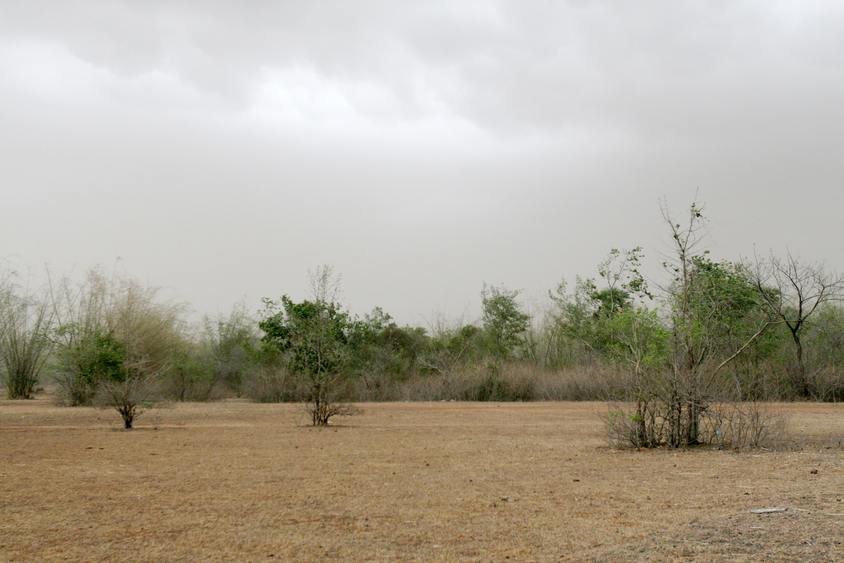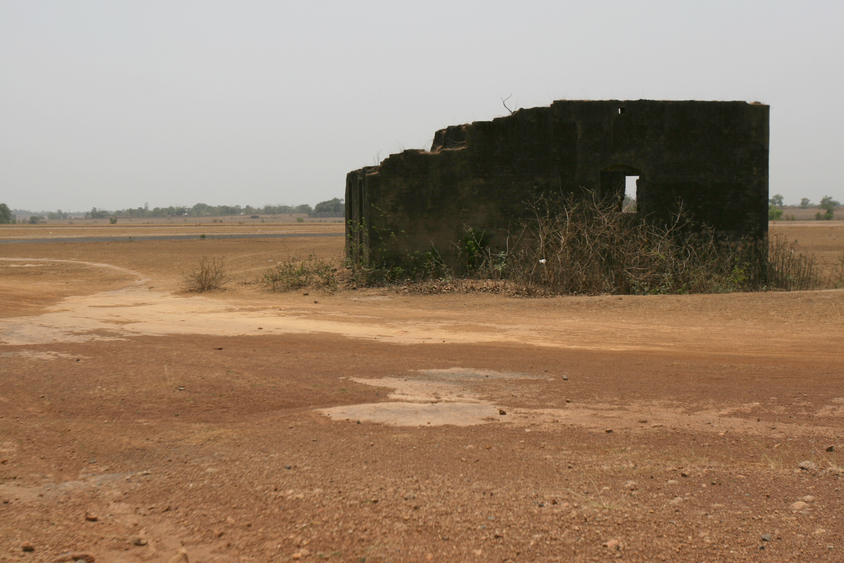The context
We have arguably entered the Anthropocene epoch, a new geological era defined by unprecedented human-made disturbances over earth’s ecologies (Morton 2013). In this era, the ecological integrity of natural, pastoral landscapes in emerging economies like India are endangered due to governmental pressure for rapid growth. Under the spectre of the contemporary conditions of anthropogenic climate change in these developing economies, the actual environments of the various rural sites and pastoral landscapes are undergoing massive environmental transformation. Contemporary India is going through an intensifying process of land development to facilitate rapid urbanisation (McKinsey Quarterly 2010). As a result of this speedy growth, many of the greener pastures in the rural hinterlands are developing into post-industrial zones, deeply affecting the integrity of the environmental as well as socio-cultural climate. Consequently, these scenic landscapes are transmuting to become homogenised wastelands, with complex transitions unfolding within their traditionally rich culture and history. In India there are numerous such sites that are going through an intense cross-fertilisation between multi-layered development processes within traditionally integrated rural areas, affecting the natural landscapes suffused with their own unique site-specific characters. Some of these transitory landscapes are exposed to phonographic fieldwork as sites for investigation through the development of diegetic narratives in sound art and compositions.
One of these sites is Tumbani – the word sounds musical to some ears. Tumbani, which means ‘small forest’ in the Santhali language, is a little plateau on the Bengal–Jharkhand border in the eastern part of India. Years ago, Tumbani could be visually described as pockets of Santhal (a tribe) habitations within discreet natural forestry and vast spaces of landscape otherwise lying empty – an apparently infertile, dry, and alluvial land with a particular kind of soil that is reddish in colour. Far from the cities, alienated from events and happenings, this barren land maintained its own sylvan entity marked by tranquil silence and meditative calm. Quite unassumingly, in the last forty years, the area has been developed into an industrial belt. Starting from their earlier history of settlement on this land, the Santhal community survived through agriculture and hunting, largely depending on the land and the woods covering parts of the land. The main source of sustenance was a deep-rooted community tradition and a distinctive tribal culture practised for thousands of years. They were happy with their apparent isolation from the outside. But the outer world started to interfere when a series of events struck the landscape.
Something remarkable happened at the time of World War II: British troops started a military base and constructed a medium-sized aerodrome on the outskirts of Tumbani. Before it could be accommodated within the landscape, the war ended. A few years later, the base camp was dismantled; the buildings stayed mostly unoccupied and the aerodrome was soon unattended, becoming a surreal space within the silent woods. As a first step toward consolidating their encounter with the outside, the Santhals embraced Catholicism, which had been popularised by the Christian missionaries after the British army left the area. In the early 1960s, one social reformer from the nearby metropolis of Calcutta (now Kolkata) was given a large amount of land in Tumbani by the Government to form a school for ‘tribal development’. He was an educationist and a man of vision. A few of his favourite students joined him as volunteers and started the school in a tent. Days of encounters, interactions, and campaigning were followed by one or two students from the tribal community joining the school. Within a few years, the school managed to get state grants and was run as a government-aided institution. At the same time, residential hostels were formed to attract students from outside Tumbani, since the number of students from within the Santhal community was very few. Students from distant cities and small towns came to stay in the school hostel; teachers started to live on the campus; and Dumka Road, connecting Bengal and Bihar, went through the heart of Tumbani. Santhal villages started to supply maidservants and day labourers for schools, hostels, and teachers’ quarter’s daily activities. A parallel community of elite culture started to develop fast in this quixotic land.
Meanwhile, a subdivisional forestry range office was opened to spread social plantation in the area. Empty grasslands and discreet natural greenery were upturned into planned forestry with new plants in lines and rows. More people started to visit the area for work; alongside the people from the city came electricity, telephones, and radio. Waves of political upheavals and the 1968 student revolution reached Tumbani in the early 1970s. The school campus turned out to be an underground shelter for ultra-left activities. It was a troubled time for the school authorities; teaching was suspended and the hostel was closed for an indefinite period. When the school was reopened three years later, it was not the same as before. Most of the non-resident students disappeared, the school returned to its earlier position of providing ‘tribal development’. At the same time, the number of students from the Santhal community was increasing, indicating trust in a developing lifestyle.
The outskirts of the area were rich with granite and other stone resources. Meanwhile, a few small entrepreneurs set out to exploit this layer of stones by forming small businesses supplying the stone chips needed to make concrete structures in big cities for large-scale construction purposes. They started to dig the earth and used dynamite to blast the layers. Tumbani experienced new-fangled aural and visual images, joined by newer sounds from digging machines, overloaded trucks, and crushers. New sights included working Santhal women in colourful attire on the streets, bulky machinery, and smoke rising over the landscape. The air became thick with stone powders. One after another, crusher machines were installed, and more lands were being occupied by enthusiastic investors. People from the Santhal community were attracted to the doors of crusher offices as daily labourers. Many Santhal women came to earn extra money, which disrupted the domestic balance. Within a few years, most of the working people were diagnosed with the preliminary stages of tuberculosis of the lungs due to the stone dust in the air. Tumbani saw changes in the landscape, but was still perplexed in coming to terms with the new situation. The school observed these changes silently, but disturbances in the social, cultural, and ecological balance were unanswered. The extraneous effects of the industrialisation of the landscape was visible as school staff members moved off the campus to stay around the nearby township of Rampurhat. Students started to leave the hostel; most of the rooms lay unoccupied and under-maintained. Schooling was reduced to become a mere ten-to-five affair. In the evenings, the locality was silent, the vacant buildings and open fields listened to the not-so-distant sound of crusher machines and witnessed black smoke billowing into the sky.



